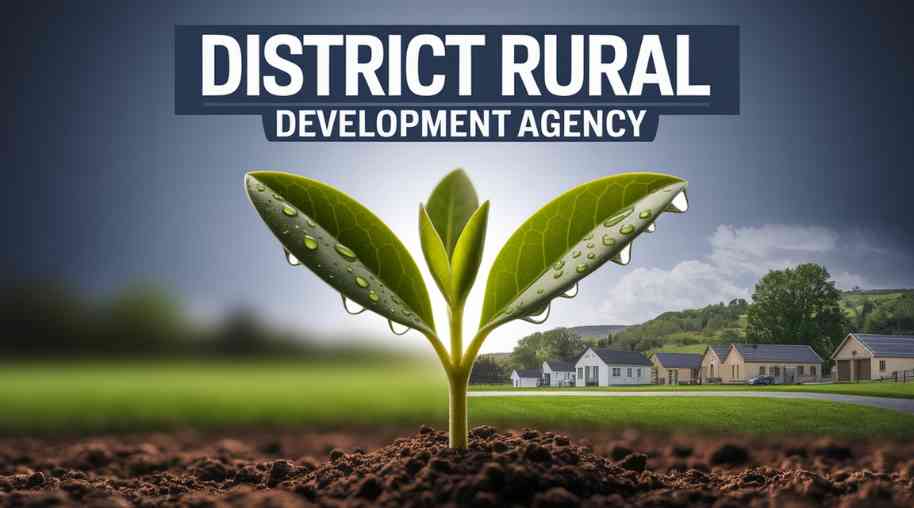DRDA Full Form - District Rural Development Agency
by Shashi Gaherwar
0 1066
District Rural Development Agency (DRDA): Empowering Rural India through Development Initiatives
Introduction
The District Rural Development Agency (DRDA) plays a crucial role in implementing rural development programs in India. As a nodal agency, it works to ensure the efficient execution of various schemes aimed at poverty alleviation, employment generation, and infrastructure development in rural areas. Established to bridge the gap between policy-making and ground-level implementation, DRDA has been instrumental in transforming rural landscapes.

Objectives of DRDA
DRDA's primary objectives revolve around holistic rural development. These include:
1. Poverty Alleviation – Implementing schemes to uplift economically weaker sections.
2. Employment Generation – Promoting self-employment and wage employment initiatives.
3. Infrastructure Development – Enhancing rural roads, housing, and sanitation facilities.
4. Women and Child Welfare – Focusing on social upliftment and empowerment.
5. Capacity Building – Providing skill development programs to rural youth.
6. Sustainable Development – Encouraging eco-friendly and sustainable farming practices.
Key Functions of DRDA
DRDA serves as a coordinating agency, ensuring the smooth implementation of rural development schemes. Some of its key functions include:
• Planning and Implementation: Formulating strategies for effective execution of rural development programs.
• Monitoring and Evaluation: Assessing the impact of various schemes and ensuring their transparency.
• Collaboration with Stakeholders: Working alongside government bodies, NGOs, and private organizations to maximize development efforts.
• Capacity Building and Training: Organizing workshops and training programs to enhance the skills of beneficiaries.
Major Schemes Implemented by DRDA
1. Mahatma Gandhi National Rural Employment Guarantee Act (MGNREGA)
This flagship scheme provides at least 100 days of wage employment to rural households, ensuring financial stability and economic growth.
2. Deendayal Antyodaya Yojana – National Rural Livelihood Mission (DAY-NRLM)
Aimed at improving rural livelihoods, this program focuses on self-employment, financial inclusion, and skill development of rural women and marginalized communities.
3. Pradhan Mantri Awas Yojana – Gramin (PMAY-G)
DRDA facilitates the construction of affordable housing for rural poor under this initiative, ensuring dignified living conditions.
4. Swachh Bharat Mission – Gramin (SBM-G)
This program focuses on rural sanitation and hygiene by promoting toilet construction and waste management systems.
5. Pradhan Mantri Gram Sadak Yojana (PMGSY)
Under this scheme, DRDA oversees the construction and maintenance of rural roads to improve connectivity and boost economic opportunities.
6. Integrated Watershed Management Programme (IWMP)
This initiative promotes sustainable water resource management, soil conservation, and afforestation in rural areas.
Impact of DRDA on Rural Development
Over the years, DRDA has played a transformative role in rural India. The key impacts include:
• Reduction in Rural Poverty: Implementation of various self-employment and wage employment schemes has lifted millions out of poverty.
• Enhanced Livelihood Opportunities: Skill development programs have provided better employment prospects to rural youth.
• Improved Infrastructure: Development of roads, housing, and sanitation has significantly improved living standards in villages.
• Women Empowerment: Focused initiatives for women have enhanced their financial independence and social status.
• Sustainable Growth: Eco-friendly practices have been encouraged, leading to better resource management.
Challenges Faced by DRDA
Despite its success, DRDA encounters several challenges in executing its programs effectively:
• Bureaucratic Hurdles: Delayed decision-making and fund disbursement affect timely implementation.
• Lack of Awareness: Many rural beneficiaries remain unaware of available schemes and their benefits.
• Corruption and Leakages: Misallocation of funds and corruption hinder effective execution.
• Inadequate Infrastructure: Poor connectivity and lack of basic amenities pose logistical challenges.
Way Forward
To enhance DRDA’s effectiveness, the following measures can be adopted:
• Digital Integration: Use of technology for better monitoring, fund allocation, and transparency.
• Community Participation: Encouraging local governance bodies and NGOs to play an active role.
• Skill Development Programs: Expanding training initiatives to improve employment prospects.
• Enhanced Financial Inclusion: Strengthening access to credit and banking facilities in rural areas.
The District Rural Development Agency (DRDA) is a cornerstone of India's rural development framework. By implementing various government schemes, it plays a vital role in improving the socio-economic conditions of rural communities. Strengthening its operational efficiency and addressing challenges will further accelerate rural development, paving the way for a self-sufficient and empowered India.

Share:








Comments
Waiting for your comments